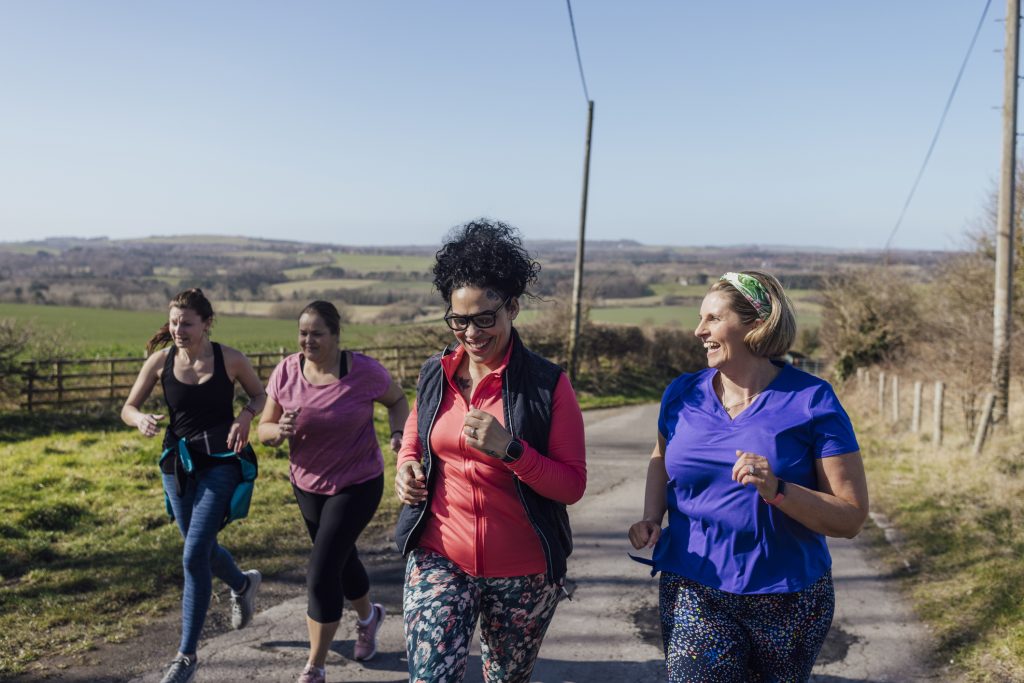What is WELLBY?
Understanding the tool for measuring wellbeing–adjusted social value

At the recent CIMSPA Conference, Connecting the Dots, keynote speaker Will Watt from State of Life explored how those working in the sector can better show the impact of their work. Here we take a closer look at the Wellby calculation, the way that HM Treasury measures social impact.
What is it?
First coined in a research paper in 2020, WELLBY is short for wellbeing year. It’s a standardised unit that translates changes in an individual’s subjective life satisfaction into a measurable metric for social value.
It can be calculated by asking the question: “Overall, how satisfied are you with your life nowadays, where 0 is ‘not at all satisfied’ and 10 is ‘completely satisfied’?”. This is done before and after an intervention or change to a person’s situation.
One WELLBY is defined as one person moving 1 point up this 0–10 life-satisfaction scale for one year. In economic valuation terms, UK Government guidance suggests that one WELLBY has a central value of £13,000 (in 2019 prices). Adjusted for more recent inflation, estimates of around £15,000 are being used.
At its foundation, WELLBY offers a way to translate improvements in subjective wellbeing into a monetary-value framework. This allows individuals, organisations and policymakers to measure, report and compare the value of interventions that affect life satisfaction, not purely economic transactions or physical health outcomes.
Why it matters
The UK Government’s appraisal guide, the HM Treasury Green Book (supplementary guidance on wellbeing) explicitly recognises that social/public value should include “all significant costs and benefits that affect the welfare and wellbeing of the population, not just market effects”.
WELLBY links to the familiar health-economics measure QALY (quality-adjusted life year). Used by the NHS and health policy makers, QALY aligns wellbeing measurement with health and clinical evaluation frameworks.
For organisations that deliver social interventions, including charities, the public sector, and sport and physical activity providers, WELLBY offers a transparent, consistent way to quantify value. It reaches beyond core outputs such as number of sessions delivered and moves into outcomes like the change in participant’s life satisfaction and value: effectively reporting on monetised benefit.
Key features of WELLBY
The organisation that created WELLBY’s practical toolset, State of Life, highlights several crucial elements:
Outcomes → Impact → Value
There is a recommended simple, three-step approach:
Outcomes
Define what changes you want to occur, for example, improved life satisfaction, more physical activity or reduced loneliness.
Impact
Establish reliably that the intervention caused those outcomes via control groups, validated measures and pre-post surveys.
Value
Translate the impact into monetary terms through WELLBY once the causal evidence is in place.
Use of validated measures
State of Life emphasise the importance of using recognised UK datasets and surveys where possible, for example, the Office for National Statistics’ measures of national wellbeing, so interventions can be benchmarked against national baselines or control groups.
Affordability and practicality
The simple approach aims to make the collection of data, design of surveys, and outcomes more accessible to a wide range of individuals and organisations because it removes the need for bespoke, complex and often expensive, studies.
Transparency of valuation
The WELLBY value is openly published, not locked behind proprietary systems, enabling all organisations to apply credible valuations to their work.
Benefits of WELLBY for the sport and physical activity workforce
WELLBY offers a number of benefits for professionals working in sport, physical activity and active wellbeing.
A credible evaluation of wellbeing impacts
Often sport and activity programmes focus on physical health such as improved fitness, reduced BMI, or participation metrics like number of sessions and attendance. WELLBY enables the framing of outcomes in terms of wellbeing such as life satisfaction, mental health and social connectedness.
These are increasingly recognised as important value measures: for example, research shows that regular weekly exercise is associated with a measurable gain (one example was +0.16) on life satisfaction scale when controlled for other factors.
With the update to the Sport England Moving Communities dashboard incorporating WELLBY, the sector now has tools aligned with Treasury-approved methodology.
A stronger case for funding and investment
Using WELLBY, sport and physical activity programmes can quantify their impact in a monetary way that resonates with funders, commissioners, local authorities or health agencies.
If you can show your programme shifts participants’ life satisfaction by 0.5 on the 0-10 scale, you could estimate the number of WELLBYs generated and multiply by the valuation rate to estimate benefit.
This helps when bidding for funding, demonstrating return on investment or comparing alternative strategies.
Ensuring alignment with preventive health policy
Physical activity is increasingly important as part of a preventive health service, supporting mental wellbeing, reducing loneliness and preventing chronic illness.
WELLBY allows physical activity professionals to link to health-economics frameworks used by the NHS and policy makers. By using WELLBY, you can compare your intervention’s value to health-care interventions.
This helps organisations and professionals to interface with public health commissioning, showing their work has measurable social and health value beyond just attendance or fitness gains.
Prioritising interventions with greatest value
WELLBY and the tools from State of Life allow you to assess which interventions and policies may deliver the biggest wellbeing gain, enabling strategic decisions about resource allocation.
By assessing baseline life satisfaction of participants, expected change, number of participants and duration, programmes can estimate what the value might be. This enables comparison of different programme options.
This is valuable to workforce professionals for designing high-impact programmes, not just delivering them.
Data-driven continuous improvement
Because WELLBY requires measurement of life satisfaction and other validated wellbeing outcomes, along with causal attribution, sport and physical activity providers must collect high-quality data. This encourages a better monitoring and evaluation culture; evidence-based iteration through understanding what works, what doesn’t, and refining programmes; and stronger credibility. By replacing anecdotal claims of benefit, the sector can present data-backed evidence of wellbeing gains.
Practical considerations
While WELLBY offers many benefits, there are practical considerations to ensure it is used effectively.
Baseline measurement is key
You must collect participants’ life-satisfaction scores pre-intervention and ideally have a comparable control group or benchmark data. Without this, you cannot credibly claim wellbeing gains.
Attribution matters
It is essential to demonstrate your programme caused the improvement, not other external factors. This is often the most challenging part.
Realistic outcomes
Small improvements are realistic. +0.1 or +0.2 points of life satisfaction per person are more plausible than +1 in many interventions.
Duration of effect
The WELLBY calculation assumes the change lasts for one year. If the effect is shorter, you must adjust accordingly.
Data collection costs
While the simplicity of the approach supports affordability, there is still resource required in survey design, analysis and data management, so ensuring capacity is important.
Using the value with caution
The monetary valuation of approximately £13,000/WELLBY should be used as an estimate or guide, not an over-claim. Sensitivity analysis, with upper and lower boundaries, is best practice. This means testing how your results would change if your assumptions or estimates were slightly different. It’s about showing the possible range of outcomes rather than claiming a single, precise figure.
Communicating findings
There is a need to be able to translate results into digestible statements like “Our programme generated approximately 30 WELLBYs, equating to an estimated social value of £390,000.”
Conclusion
For the sport and physical activity workforce, WELLBY offers a powerful and credible mechanism to demonstrate the wellbeing and social value of your work.
By going beyond traditional metrics like attendance and fitness improvements to life-satisfaction and wellbeing and converting these into monetised value aligned with the Green Book and health-economics practice, you can:
- strengthen funding bids and dialogue with commissioners
- align with public health policy and preventive-health narratives
- prioritise high-impact interventions
- build robust data-driven evaluation and continuous improvement.
As the sector continues to emphasise wellbeing, social connection, inclusion and participation, WELLBY is set to become an essential tool in the workforce’s toolkit, enabling sport and physical activity professionals to evidence, report and amplify the value they deliver.








